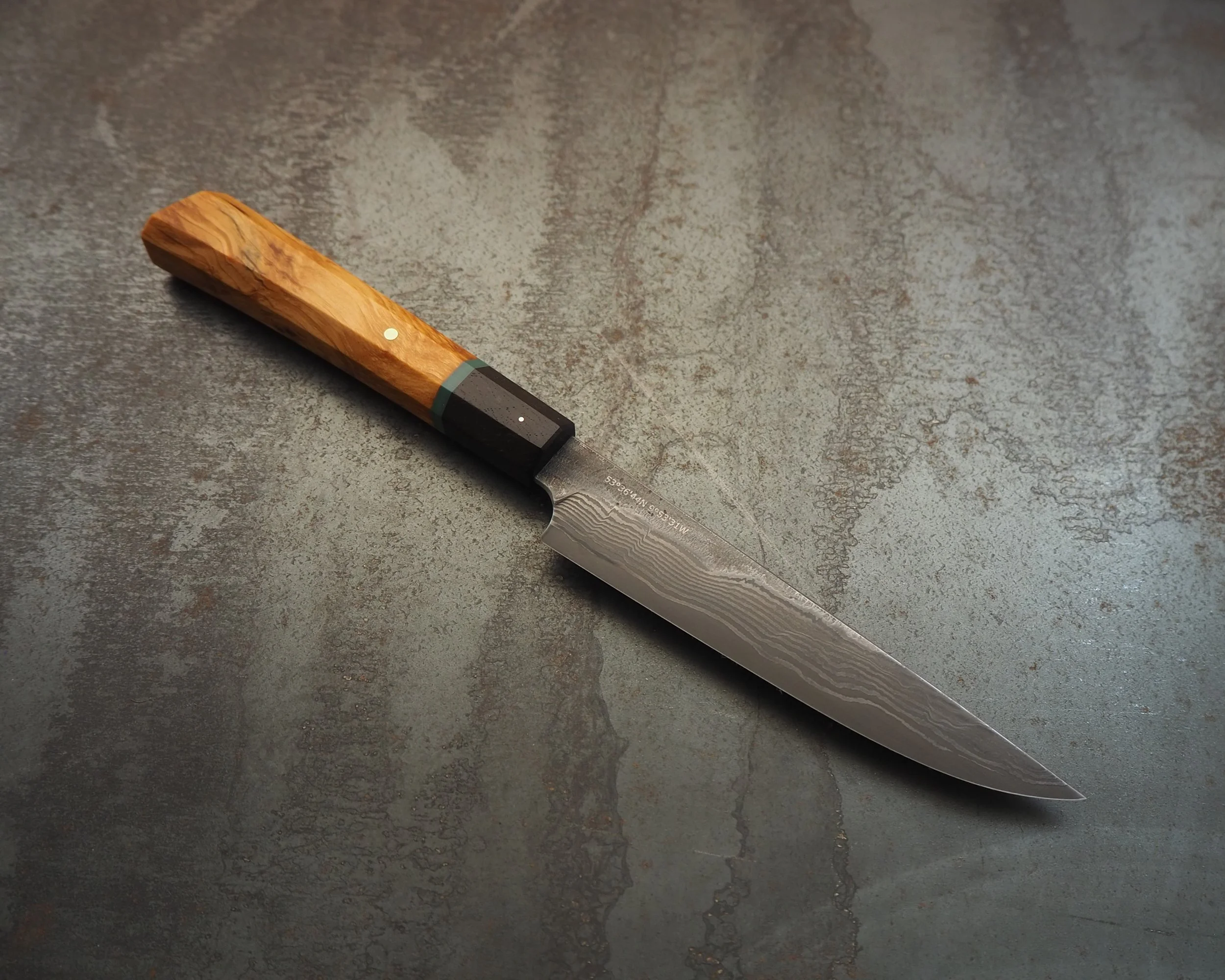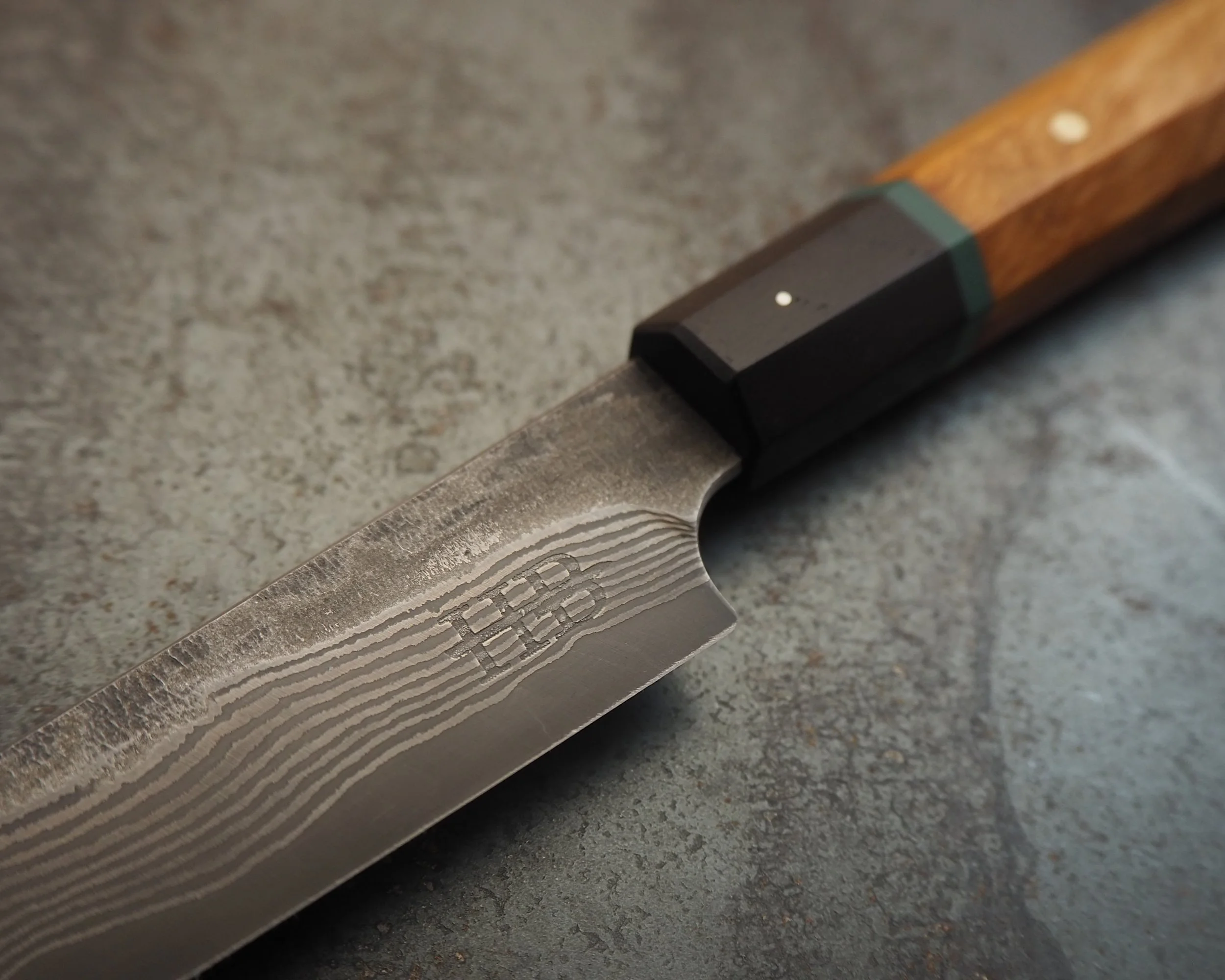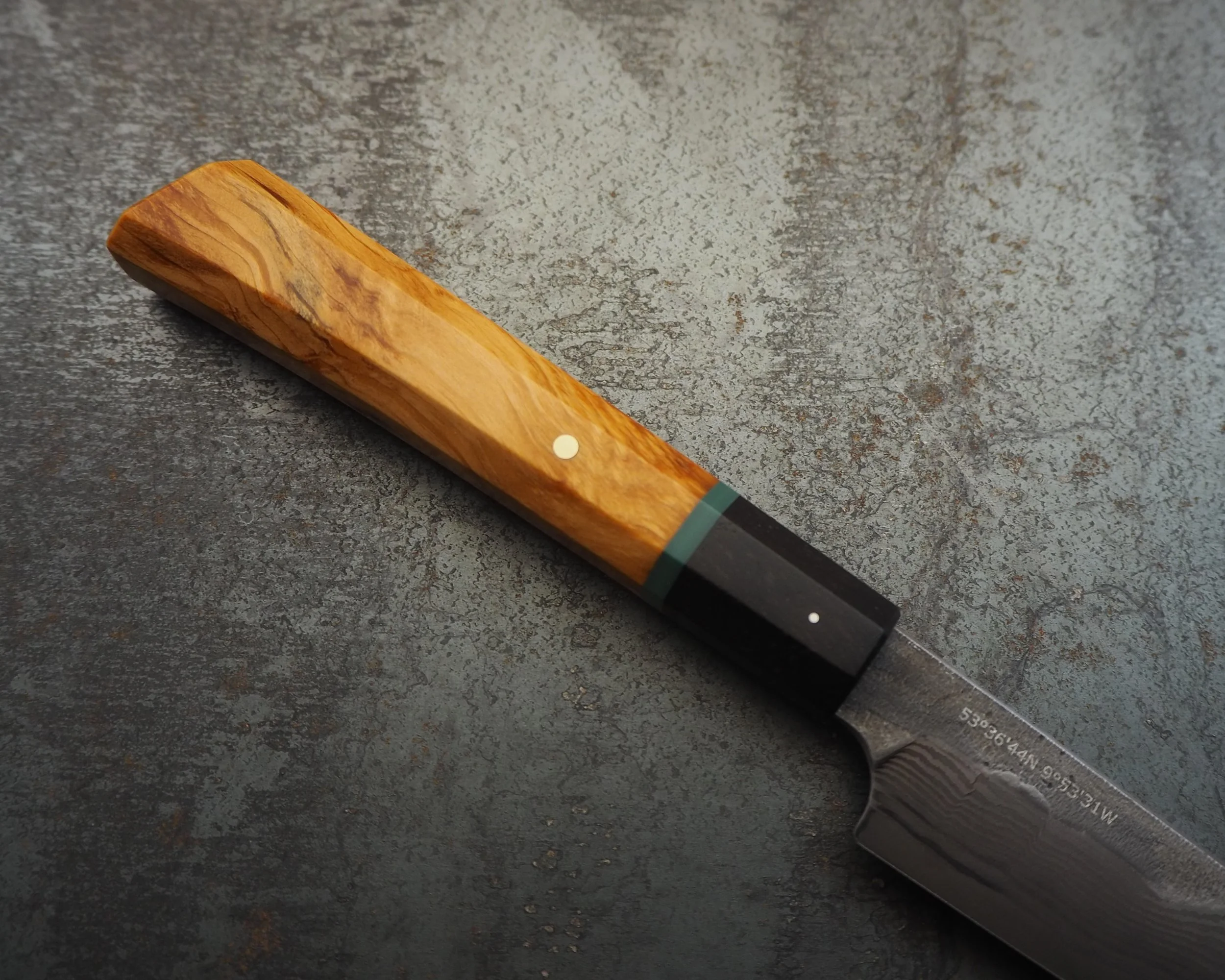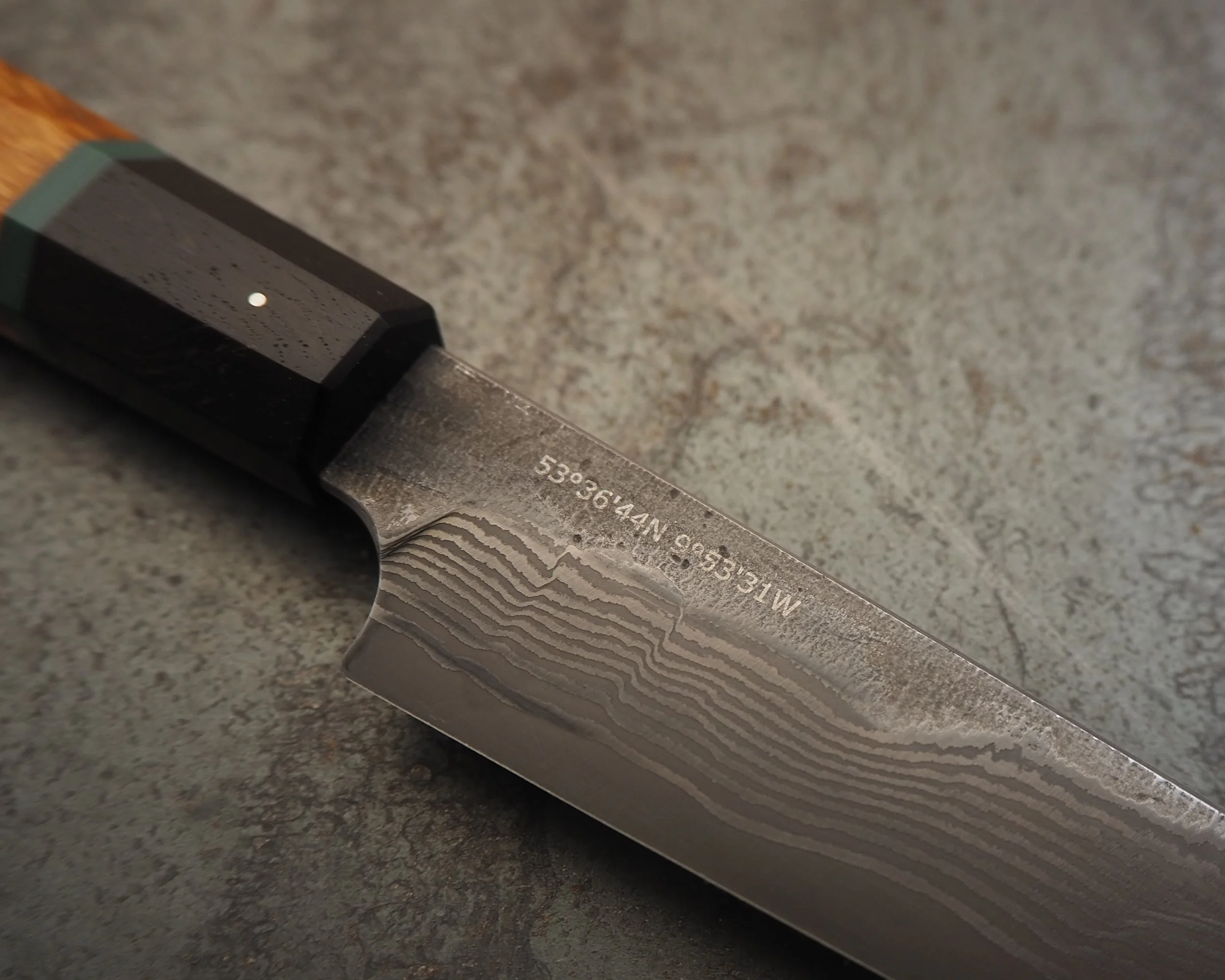Steak
The blade of this Chef’s knife is made of multiple layers of different steels. Known as San Mai, it is formed by forge welding contrasting layers of steel together under immense pressure and heat. In this case, a cutting core of 26C3 high carbon steel is sandwiched between layers of 1095 &EN42J high carbon steels. This allows for a very hard, razor sharp cutting core, protected on either side by a softer jacket. As the blade was ground and polished, the cutting core was revealed, with each distortion in the layers representing a different blow of the hammer during forging.
The spine and choil is rounded for comfort in use, and the upper flats of the knife have been left with a gentle “brut de forge” finish. The cutting edge is reasonably flat near the heel, with a generous curve up to a fine tip.
The handle is made of ancient Irish Bog Oak from Glenstal Abbey, wind felled Cherry from Co. Clare, and green Atlantic Ocean plastic from Culfin in Co. Galway, with brass, and sterling silver pins. It is octagonal and gently curved, tapering out towards the butt for balance.
This knife is designed for slicing meat at the table, but is also a very handy petty knife, for general purpose cooking.
Map coordinates: 53°36'44N 9°53'31W (Culfin, Co. Galway)
Blade length: 120mm
Overall length: 240mm
Weight: 64g
Balance point: At the silver pin.
The blade of this Chef’s knife is made of multiple layers of different steels. Known as San Mai, it is formed by forge welding contrasting layers of steel together under immense pressure and heat. In this case, a cutting core of 26C3 high carbon steel is sandwiched between layers of 1095 &EN42J high carbon steels. This allows for a very hard, razor sharp cutting core, protected on either side by a softer jacket. As the blade was ground and polished, the cutting core was revealed, with each distortion in the layers representing a different blow of the hammer during forging.
The spine and choil is rounded for comfort in use, and the upper flats of the knife have been left with a gentle “brut de forge” finish. The cutting edge is reasonably flat near the heel, with a generous curve up to a fine tip.
The handle is made of ancient Irish Bog Oak from Glenstal Abbey, wind felled Cherry from Co. Clare, and green Atlantic Ocean plastic from Culfin in Co. Galway, with brass, and sterling silver pins. It is octagonal and gently curved, tapering out towards the butt for balance.
This knife is designed for slicing meat at the table, but is also a very handy petty knife, for general purpose cooking.
Map coordinates: 53°36'44N 9°53'31W (Culfin, Co. Galway)
Blade length: 120mm
Overall length: 240mm
Weight: 64g
Balance point: At the silver pin.
The blade of this Chef’s knife is made of multiple layers of different steels. Known as San Mai, it is formed by forge welding contrasting layers of steel together under immense pressure and heat. In this case, a cutting core of 26C3 high carbon steel is sandwiched between layers of 1095 &EN42J high carbon steels. This allows for a very hard, razor sharp cutting core, protected on either side by a softer jacket. As the blade was ground and polished, the cutting core was revealed, with each distortion in the layers representing a different blow of the hammer during forging.
The spine and choil is rounded for comfort in use, and the upper flats of the knife have been left with a gentle “brut de forge” finish. The cutting edge is reasonably flat near the heel, with a generous curve up to a fine tip.
The handle is made of ancient Irish Bog Oak from Glenstal Abbey, wind felled Cherry from Co. Clare, and green Atlantic Ocean plastic from Culfin in Co. Galway, with brass, and sterling silver pins. It is octagonal and gently curved, tapering out towards the butt for balance.
This knife is designed for slicing meat at the table, but is also a very handy petty knife, for general purpose cooking.
Map coordinates: 53°36'44N 9°53'31W (Culfin, Co. Galway)
Blade length: 120mm
Overall length: 240mm
Weight: 64g
Balance point: At the silver pin.
It is important to mention that carbon steel blades require a little more care and maintenance than stainless steel, but you will be rewarded with a rich patina that will illustrate the knife’s history with you over a lifetime of use. Each knife comes with instructions on how to look after it.








